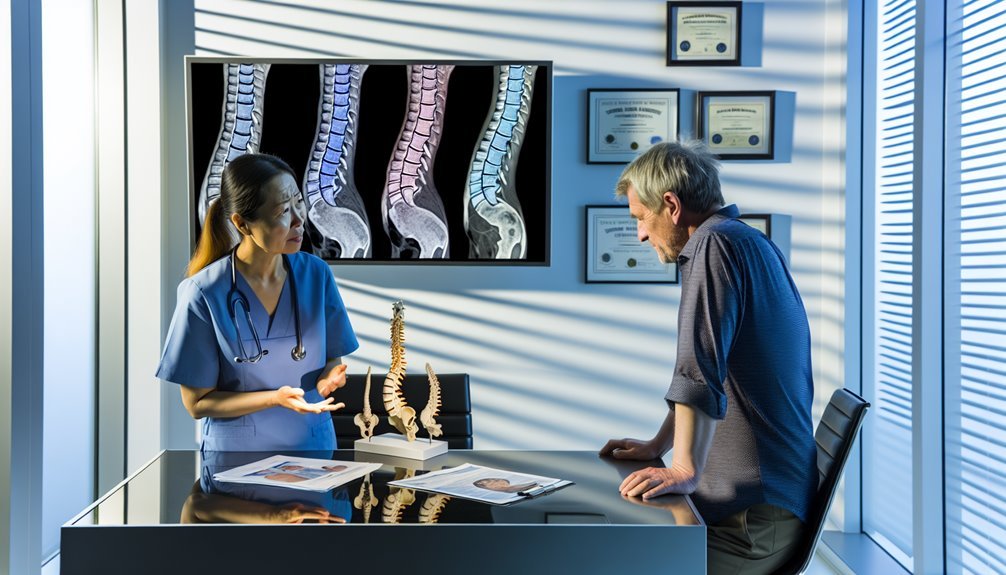
Imagine standing at a crossroads where each path represents different spine surgery options—your future comfort and mobility hanging in the balance. You’re not alone in this critical decision. At SCI San Antonio’s Spine Center of Excellence, you’ll find a comprehensive suite of surgical approaches tailored to your specific condition. From minimally invasive techniques to robotic-assisted procedures, the choices can seem overwhelming. Understanding these options isn’t just beneficial—it’s essential for reclaiming your quality of life.
Minimally Invasive Spine Surgery: Benefits and Recovery
Minimally invasive spine surgery (MISS) offers substantial benefits over traditional open procedures, while maintaining equivalent clinical outcomes in properly selected patients. You’ll experience significantly less muscle damage as surgeons access your spine through small incisions using specialized instruments and imaging guidance.
MISS typically results in shorter hospital stays—often same-day discharge or just 1-2 days compared to 3-7 days with traditional approaches. Post-operative pain is reduced, enabling faster mobilization. Recovery timelines compress from months to weeks, with many patients returning to light activities within days.
Your surgeon will determine if you’re a candidate based on specific pathology, anatomical considerations, and clinical presentation.
Advanced Imaging and Robotic-Assisted Techniques & Spine Surgery Options
The evolution of spine surgery has been revolutionized by precision imaging technologies and robotic navigation systems that dramatically enhance surgical accuracy. At SCI San Antonio, you’ll benefit from 3D visualization platforms that create detailed anatomical maps of your spine before any incision occurs.
Patient-specific planning integrates your unique anatomy into surgical navigation software, allowing surgeons to simulate procedures with submillimeter precision. This technology enables personalized implant selection tailored to your spinal architecture and biomechanical needs.
Robotic assistance functions as an extension of the surgeon’s expertise, eliminating hand tremors and optimizing instrument trajectories through critical neurovascular corridors, significantly reducing complication risks.
Traditional vs. Modern Approaches to Spinal Fusion
How dramatically spinal fusion techniques have evolved reflects the broader technological revolution in spine surgery over the past two decades. Traditional open fusion procedures typically require larger incisions, more muscle dissection, and longer recovery times, while carrying increased spinal fusion risks such as infection and blood loss.
Modern minimally invasive approaches utilize smaller incisions, specialized instruments, and advanced imaging, significantly reducing tissue trauma. This evolution has demonstrably decreased common spinal fusion complications including adjacent segment disease, pseudarthrosis, and hardware failure.
You’ll experience less postoperative pain, shorter hospital stays, and faster return to daily activities with these contemporary techniques. Additionally, these advancements can lead to reduced healthcare costs, which may ease the financial burden on patients. In Hungary, for example, patients can benefit from these modern techniques without compromising quality care, all while considering the cost of living in Hungary. Ultimately, this combination of improved medical practices and manageable expenses contributes to a better overall recovery experience.
Artificial Disc Replacement: When and Why It’s Recommended
While spinal fusion remains the gold standard for many degenerative conditions, artificial disc replacement (ADR) has emerged as a motion-preserving alternative for select patients with isolated disc pathology.
You’re an ideal candidate for ADR if you have single-level disc disease, minimal facet arthritis, and no significant instability. The procedure preserves natural spine movement and potentially reduces adjacent segment degeneration—a common fusion complication.
Ideal surgical technique involves precise midline placement of the artificial disc with appropriate sizing. Your surgeon must meticulously prepare the vertebral endplates while preserving structural integrity. This exacting approach demands advanced imaging and computer navigation for optimal outcomes.
The Multidisciplinary Team Approach at SCI San Antonio
Successful spine treatment extends far beyond the operating room at Spine Care Institute (SCI) San Antonio, where a coordinated multidisciplinary team collaborates on each patient’s case. Your care team includes neurosurgeons, orthopedic spine specialists, pain management physicians, physical therapists, and rehabilitation experts who meet regularly to review your progress.
This collaborative decision making ensures you receive comprehensive evaluation from multiple perspectives. Each specialist contributes their expertise to develop personalized treatment plans tailored to your specific condition, lifestyle needs, and recovery goals.
This integrated approach maximizes non-surgical options when appropriate and ensures surgical interventions are precisely targeted when necessary.
